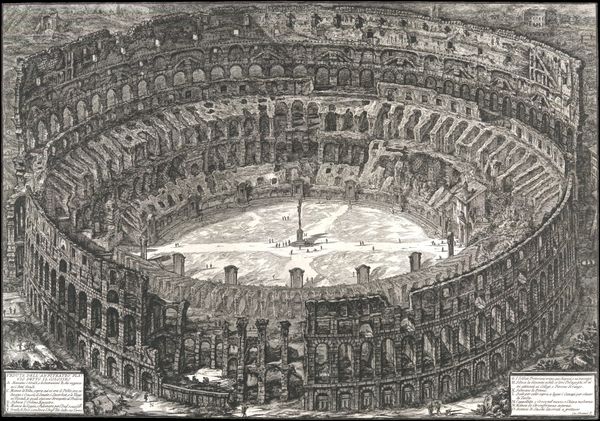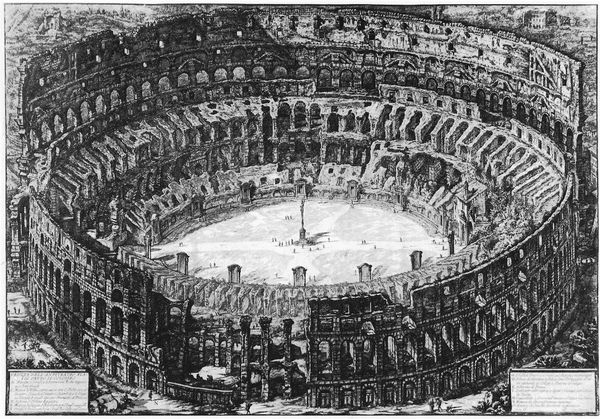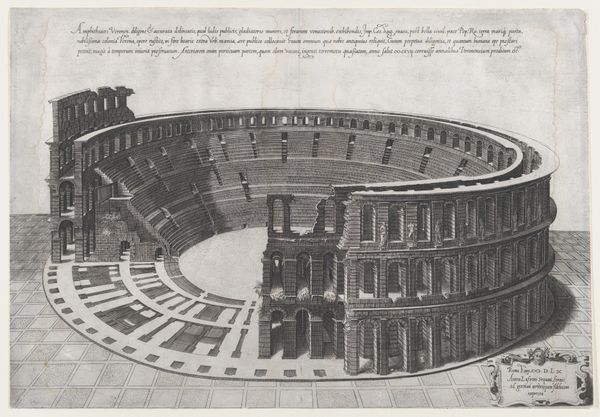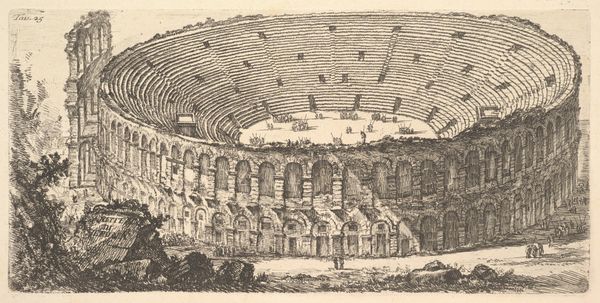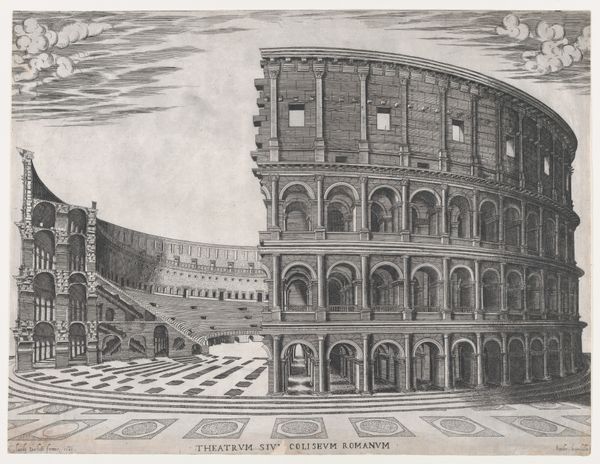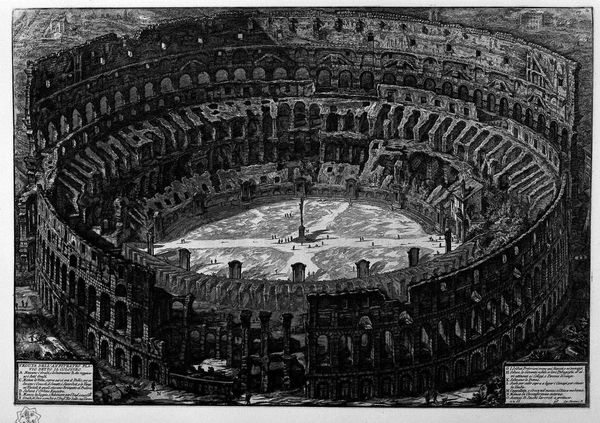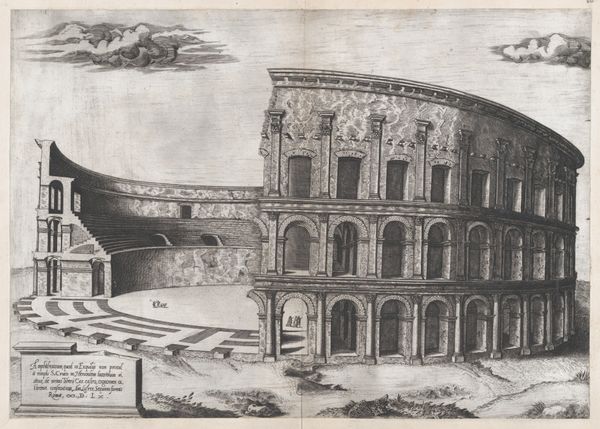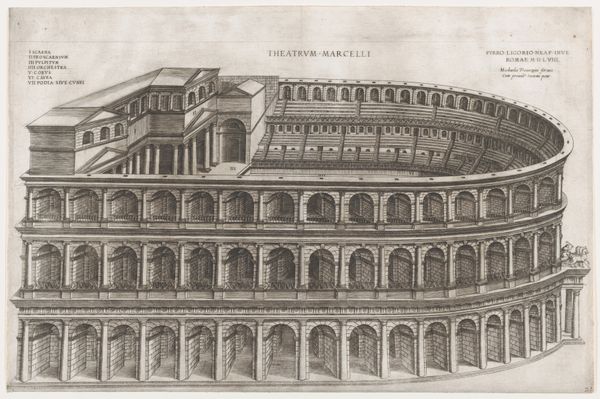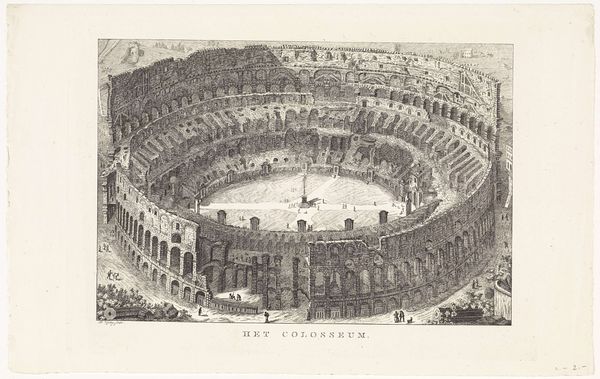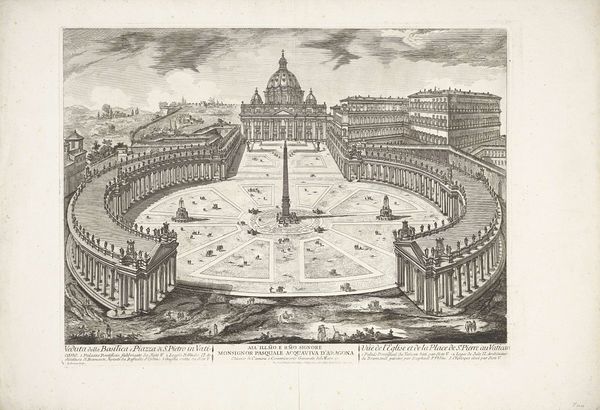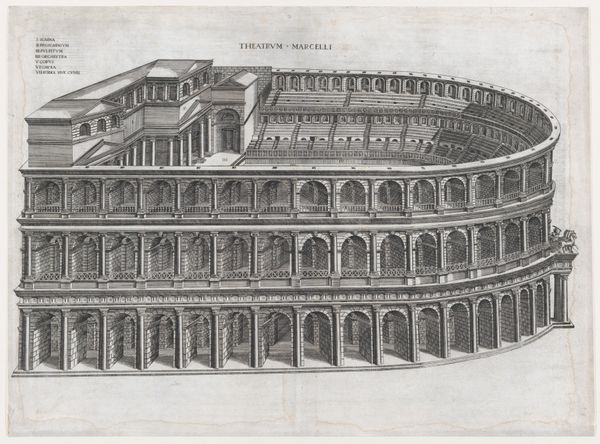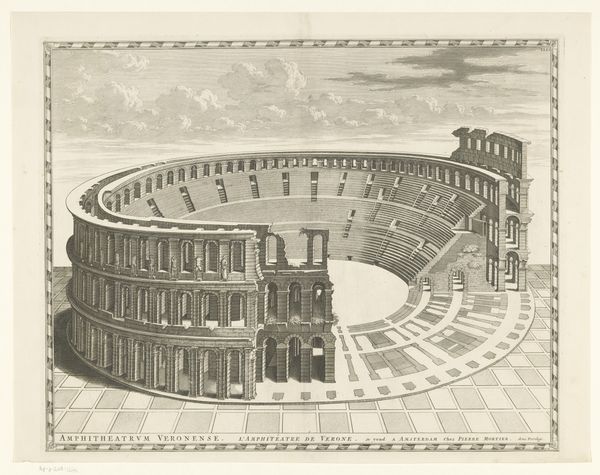
print, etching, engraving, architecture
# print
#
etching
#
landscape
#
romanesque
#
cityscape
#
history-painting
#
engraving
#
architecture
Dimensions: height 497 mm, width 710 mm
Copyright: Rijks Museum: Open Domain
Giovanni Battista Piranesi created this etching of the Colosseum in Rome in the 18th century. Piranesi's images of Roman antiquities captured the imagination of his contemporaries, and this print offers us a glimpse into the cultural fascination with the classical world. The print creates meaning through its intricate details and dramatic perspective. Made during the Grand Tour era, when wealthy Europeans traveled to Italy to experience its art and history, this etching catered to a market eager for souvenirs of their travels. However, Piranesi's work also reflects a deeper engagement with the politics of imagery. His prints often depict Roman ruins in a state of decay, suggesting a commentary on the transience of power and the decline of empires. The Colosseum, once a symbol of Roman imperial power, is shown here as a crumbling ruin, a reminder of the past glories of Rome. To truly understand this artwork, we can consult historical archives, travelogues, and architectural studies to gain insight into the cultural and political context in which Piranesi created this image.
Comments
No comments
Be the first to comment and join the conversation on the ultimate creative platform.

